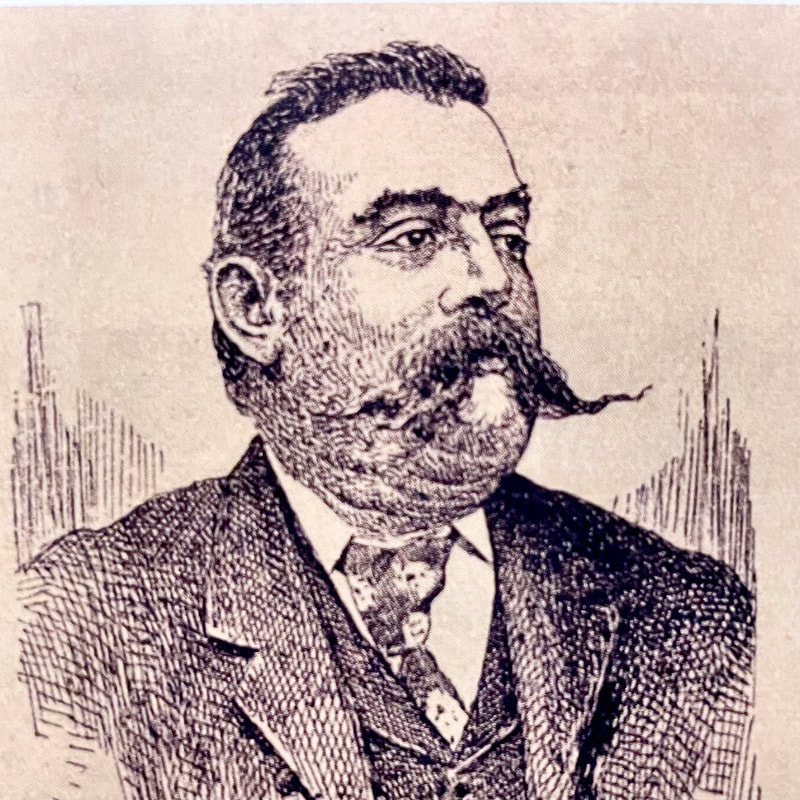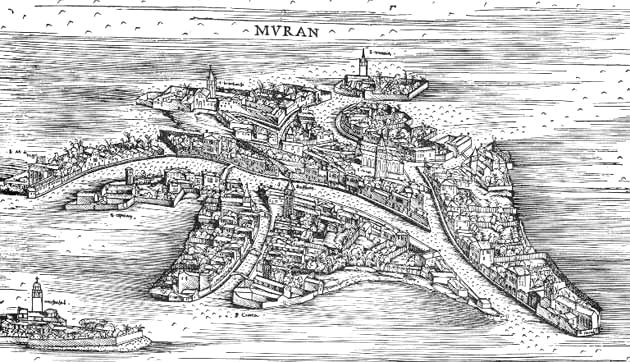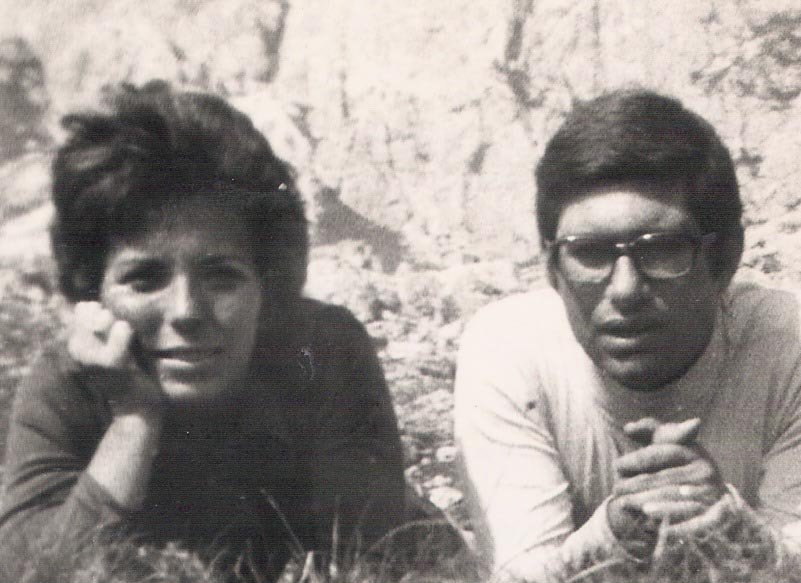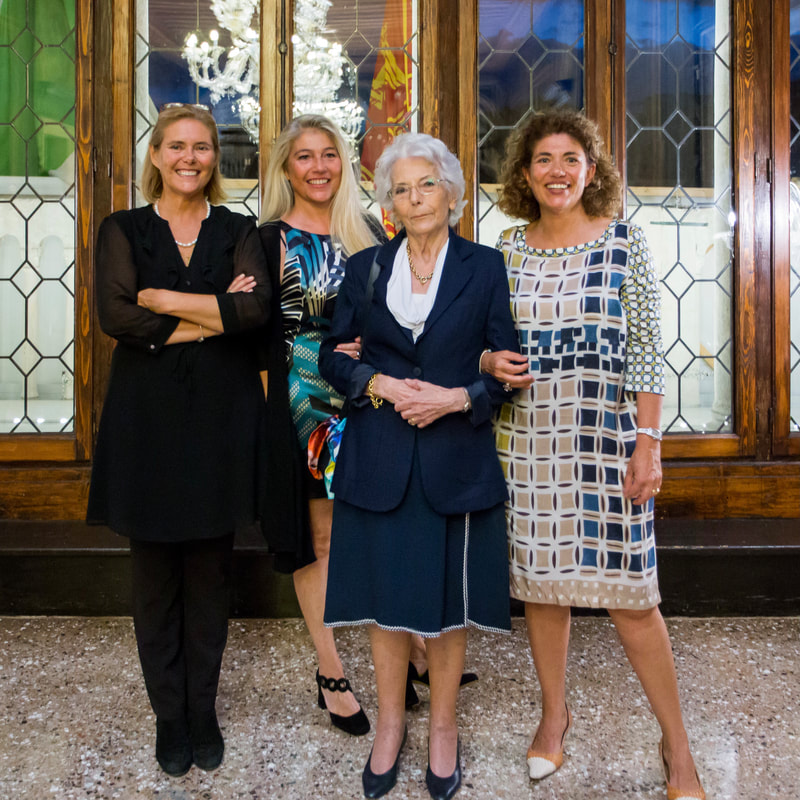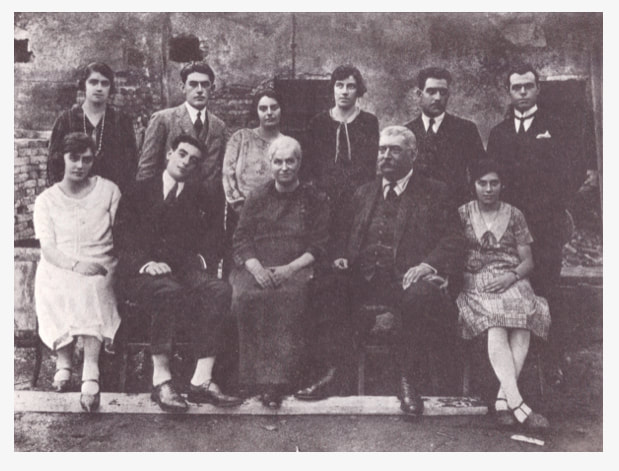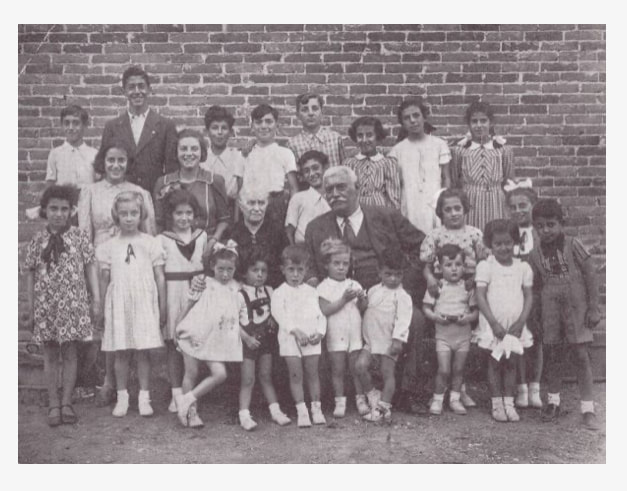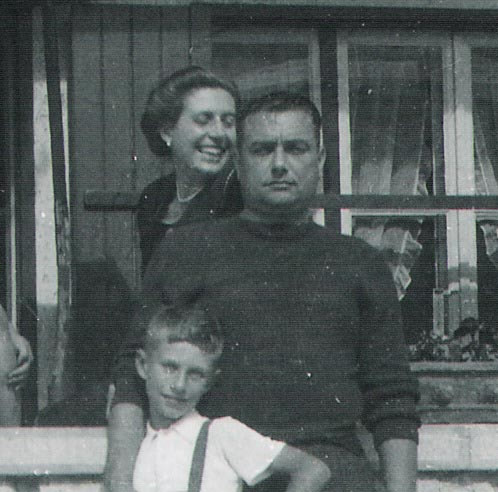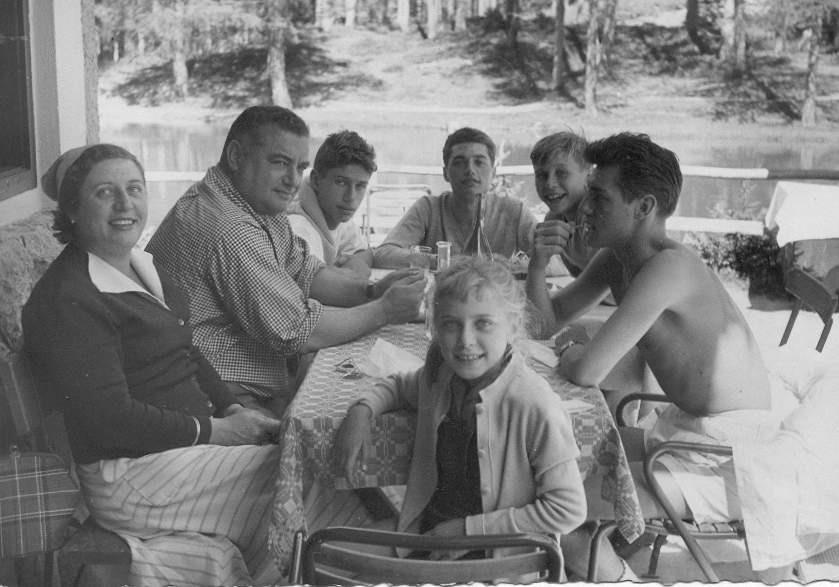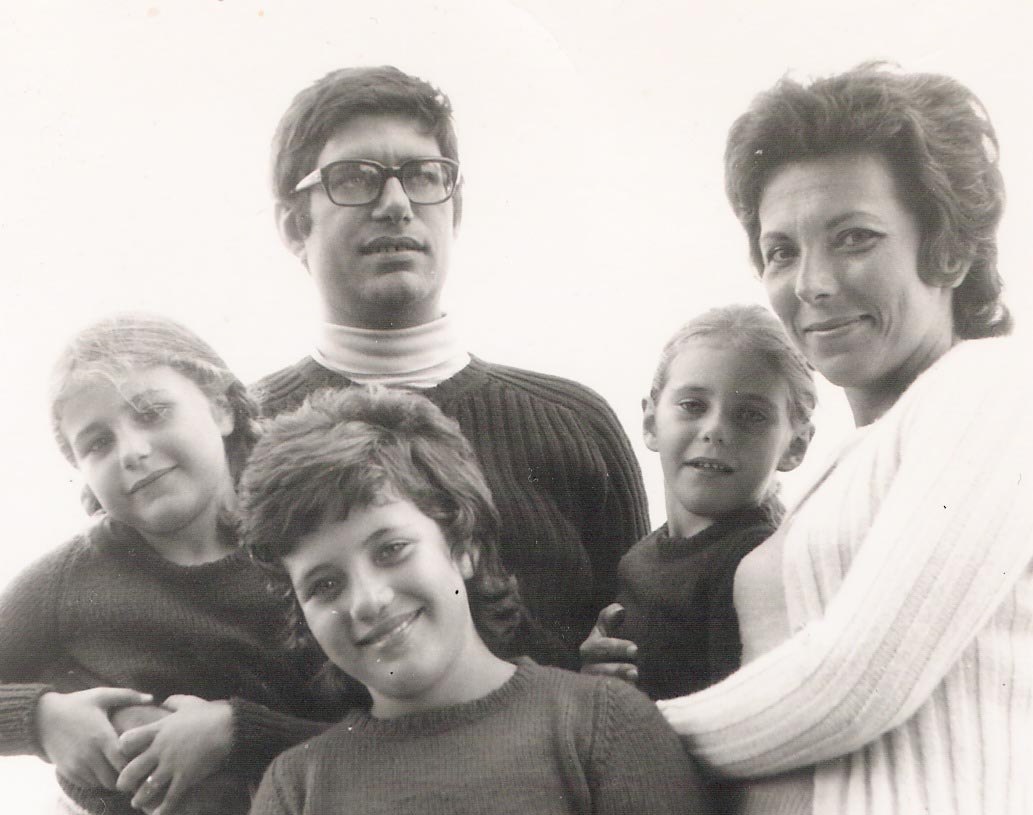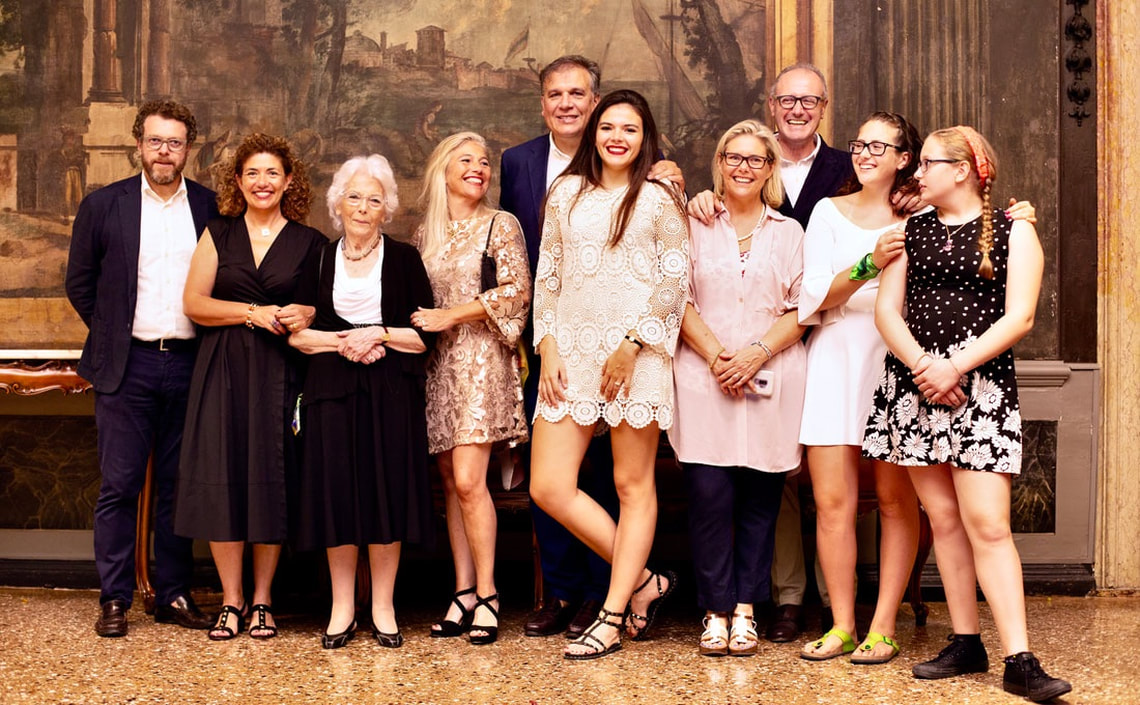UN PO' DI STORIA
A BIT OF HISTORY
Vincenzo MorettiIl nome di Vincenzo Moretti (1835-1901) è legato principalmente alla riproduzione dei vetri murrini di epoca romana che caratterizzò una parte importante dell’attività della ditta Compagnia Venezia-Murano, dove egli ha lavorato come direttore tecnico nell’ultimo quarto del XIX secolo. Egli sarà sempre ricordato come il creatore dei “murrini”, come si legge in una pagina del giornale “La Voce di Murano” del 15 Maggio del 1882: “Per gli smalti, i mosaici e i vetri a foggia greca e romana c’è il celebre Pancianella”. The name of Vincenzo Moretti (1835-1901) is mainly connected to the reproduction of glass murrine from the Roman times which characterized an important part of the activity of the Compagnia Venezia-Murano where he worked as a technical manager in the last quarter of the XIX century. He will always be recalled as the creator of “murrini”, as we can read on a page of the local newspaper “La Voce di Murano” dated back to 15th May 1882: “For varnishes, mosaics and Greek and Roman style glass there is the well-known Pancianella”. |
Andrea MorettiHa dedicato tutta la sua vita al vetro, - una cosiddetta “Vita di Vetro” - lavorando insieme al padre Germano, agli zii e ai cugini, nella fabbrica di famiglia, la Ulderico Moretti & C. Fondata nel 1927 dai figli di Luigi e di Cesare, diretti discendenti di Vincenzo. Pur continuando la tradizione di mosaici vetrosi e canne vitree, realizzò per prima in Italia, i globi da illuminazione. He dedicated his whole life to glass – the so-called “Vita di Vetro” (a life of glass) – working with his father Germano, his uncles and cousins in the family company: Ulderico Moretti & C. Founded in 1927 by the sons Luigi and Cesare – who were direct heirs of Vincenzo. Even if he continued to follow the tradition of glass mosaics and glass reeds, he was the first one to create lighting globes in Italy. |
Vita di Vetro
|
Vincenzo Moretti (1835-1901)
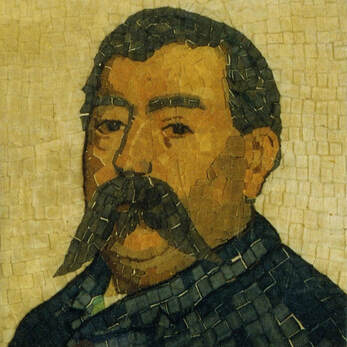
Iniziò la sua avventura vetraria come semplice tiracanna nella fabbrica di conterie di Bigaglia ma, grazie alla sua continua curiosità, alla spiccata manualità e al suo raffinato gusto artistico, divenne uno dei personaggi chiave della rinascita Muranese della seconda metà dell'ottocento in qualità di tecnico-compositore nell'officina di smalti per mosaico della ditta Salviati che, dal novembre 1872, cambierà nome in “Compagnia di Venezia e Murano di vetri e mosaici Salviati & C.”
Fu per merito suo che nel 1876, dopo vari tentativi, si riuscì a riprodurre i vetri millefiori romani e alessandrini, grande successo all'esposizione Universale di Parigi del 1878 dopo la quale vennero chiamati “vetri murrini”, parola che resterà definitivamente nel vocabolario vetrario muranese per designare qualsiasi vetro composto fondendo fettine di canna contenente un qualsiasi disegno e derivata dal XXXVII libro della Naturalis Historia di Plinio il Vecchio a indicare un misterioso minerale di origine orientale.
Alcuni dei suoi capolavori sono oggi esposti in numerosi musei nel mondo e presso il “Museo del Vetro” a Murano.
In foto: famoso Autoritratto* in vetro mosaico che Vincenzo Moretti si fece nel 1886 con l’aiuto dei figli, come documentato dalla scritta sul retro: “Questo ritratto eseguito da lui stesso assieme ai suoi figli nel 1886 raffigura il tecnico della Compagnia Venezia e Murano. Moretti Vincenzo, quel medesimo che nel 1876 vinte mille difficoltà in vetri murrini (…) componeva”.
Questo stesso ritratto servì da modello a Vincenzo e Luigi Moretti per la realizzazione della prima canna raffigurante il tecnico.
Fu esposto in numerose mostre, fra le quali: “Miniature di vetro”, murrine 1838-1924, Venezia 1990; "Branching East and West Across Time and Space. The Beautiful World of Mosaic. Venetian Glass and Wooden Mosaic of Hakone”, 20 aprile - 24 novembre 2013 HAKONE, Japan.
[*Collezione Giusy Moretti H 40 cm L 34,50 cm - Paste vitree]
[Bibliografia: Sarpellon, 1990]
Vincenzo Moretti who began his glass adventure as a simple “tiracanna” in the factory of Bigaglia’s counters, thanks to his continuous curiosity, the strong manual skills and his refined artistic taste. became one of the key figures of the Muranese rebirth of the second half of the nineteenth century as a technician – composer in the mosaic glaze workshop of the Salviati company, which from November 1872 will change its name into “Compagnia di Venezia and Murano of glass and mosaics Salviati & C. “It was thanks to him that in 1876, after several attempts, it was possible to reproduce the Roman millefiori glass and Alessandrini, great success of the Universal exposition of Paris of 1878 after which they were called “Murrini glass”, a word that will remain permanently in the Murano glass dictionary to designate any glass composed by melting slices of cane containing any design and derived from the XXXVII book of Naturalis Historia of Pliny the Elder to indicate a mysterious mineral of oriental origin.
Top photo: famous Self-portrait* in glass mosaic that Vincenzo Moretti made in 1886 with the help of his children, as documented by the inscription on the back: “This portrait painted by himself and his sons in 1886 depicts the technician of the company Venezia and Murano Moretti Vincenzo, the same one who in 1876 won many difficulties in murrini glasses (…) composed"
This same portrait served as a model to Vincenzo and Luigi Moretti for the realization of the first cane depicting the technician.
Exposed in numerous exhibitions including: “Miniatures of glass”, murrine 1838-1924, Venice 1990 Branching East and West Across Time and Space. The Beautiful World of Mosaic. Venetian Glass and Wooden Mosaic of Hakone “, April 20 - November 24, 2013 HAKONE, Japan.
[*Giusy Moretti's collection H 40 cm L 34,50 cm - Glass pastes]
[Bibliography: Sarpellon, 1990]
Fu per merito suo che nel 1876, dopo vari tentativi, si riuscì a riprodurre i vetri millefiori romani e alessandrini, grande successo all'esposizione Universale di Parigi del 1878 dopo la quale vennero chiamati “vetri murrini”, parola che resterà definitivamente nel vocabolario vetrario muranese per designare qualsiasi vetro composto fondendo fettine di canna contenente un qualsiasi disegno e derivata dal XXXVII libro della Naturalis Historia di Plinio il Vecchio a indicare un misterioso minerale di origine orientale.
Alcuni dei suoi capolavori sono oggi esposti in numerosi musei nel mondo e presso il “Museo del Vetro” a Murano.
In foto: famoso Autoritratto* in vetro mosaico che Vincenzo Moretti si fece nel 1886 con l’aiuto dei figli, come documentato dalla scritta sul retro: “Questo ritratto eseguito da lui stesso assieme ai suoi figli nel 1886 raffigura il tecnico della Compagnia Venezia e Murano. Moretti Vincenzo, quel medesimo che nel 1876 vinte mille difficoltà in vetri murrini (…) componeva”.
Questo stesso ritratto servì da modello a Vincenzo e Luigi Moretti per la realizzazione della prima canna raffigurante il tecnico.
Fu esposto in numerose mostre, fra le quali: “Miniature di vetro”, murrine 1838-1924, Venezia 1990; "Branching East and West Across Time and Space. The Beautiful World of Mosaic. Venetian Glass and Wooden Mosaic of Hakone”, 20 aprile - 24 novembre 2013 HAKONE, Japan.
[*Collezione Giusy Moretti H 40 cm L 34,50 cm - Paste vitree]
[Bibliografia: Sarpellon, 1990]
Vincenzo Moretti who began his glass adventure as a simple “tiracanna” in the factory of Bigaglia’s counters, thanks to his continuous curiosity, the strong manual skills and his refined artistic taste. became one of the key figures of the Muranese rebirth of the second half of the nineteenth century as a technician – composer in the mosaic glaze workshop of the Salviati company, which from November 1872 will change its name into “Compagnia di Venezia and Murano of glass and mosaics Salviati & C. “It was thanks to him that in 1876, after several attempts, it was possible to reproduce the Roman millefiori glass and Alessandrini, great success of the Universal exposition of Paris of 1878 after which they were called “Murrini glass”, a word that will remain permanently in the Murano glass dictionary to designate any glass composed by melting slices of cane containing any design and derived from the XXXVII book of Naturalis Historia of Pliny the Elder to indicate a mysterious mineral of oriental origin.
Top photo: famous Self-portrait* in glass mosaic that Vincenzo Moretti made in 1886 with the help of his children, as documented by the inscription on the back: “This portrait painted by himself and his sons in 1886 depicts the technician of the company Venezia and Murano Moretti Vincenzo, the same one who in 1876 won many difficulties in murrini glasses (…) composed"
This same portrait served as a model to Vincenzo and Luigi Moretti for the realization of the first cane depicting the technician.
Exposed in numerous exhibitions including: “Miniatures of glass”, murrine 1838-1924, Venice 1990 Branching East and West Across Time and Space. The Beautiful World of Mosaic. Venetian Glass and Wooden Mosaic of Hakone “, April 20 - November 24, 2013 HAKONE, Japan.
[*Giusy Moretti's collection H 40 cm L 34,50 cm - Glass pastes]
[Bibliography: Sarpellon, 1990]
Andrea Moretti (1937-2016)
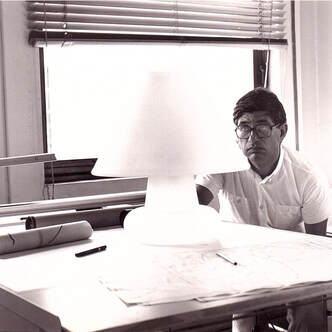
Andrea Moretti, anno 1937, dopo la maturità classica al Liceo Foscarini, dove ha studiato anche la moglie, inizia a lavorare subito, a 18 anni, nell’azienda di famiglia: la Moretti Ulderico & C.
I primi passi li compie iniziando dalla gavetta. Suo padre infatti decise di metterlo a capo di uno dei capannoni dove si faceva vetro. Un mondo che aveva conosciuto fin da piccolo e che ora vedeva dal suo piccolo ufficio tutto vetri all’interno della struttura. Ma da quell’ufficio esce spesso per stare a contatto con chi lavora, con chi suda davanti ai fuochi condividendo gioie e dolori.
Da lì a poco sale la scala che porta agli uffici della vetreria e inizia un percorso nel commerciale, fianco a fianco del padre Germano e di zii e cugini. Viaggia molto in Italia, Germania, Austria, Francia e Belgio e va a far visita ai clienti che spesso diventano anche amici.
Nel 1972 muore il padre Germano e dovrà farsi carico di responsabilità troppo grandi per un uomo di appena 35 anni. Segue con passione le vicissitudini e la cessione dell’azienda di famiglia collaborando attivamente alla ricerca dei successori in un periodo difficile per la storia di Murano e lavora come consulente prima e come dipendente poi, per la Moretti Vetrerie fino al 1990.
Seguono poi consulenze per Aziende del settore vetro a Murano e in terraferma.
Anche dopo l’operazione al cuore e sopraggiunta la pensione, ha continuato a collaborare con il mondo del vetro a lui tanto familiare e caro.
E’ venuto a mancare l’8 agosto del 2016 con molti progetti nel cassetto che le figlie con amore hanno voluto realizzare in suo ricordo.
Born in 1937, after his classical studies at the Liceo Foscarini in Venice - where his wife Giuliana Bevilacqua has studied too - at the age of 18 Andrea Moretti started working in the family business immediately: The Moretti Ulderico & C. snc. In the first period he worked his way up the ladder. In fact, his father decided to let him run one of the warehouses where glass used to be made. A world that he had known since his childhood which he could now see from his tiny office within the building. Yet, he often left the office to spend time with the workers, to be with those who usually sweat in front of the furnaces, to share joy and sorrow.
Shortly after, he walked up each step to the offices in the glasshouse, finally starting his career in the field of sales along with his father Germano, his uncles and cousins. He travelled a lot in Italy, Germany, Austria, France and Belgium visiting customers who often became his friends.
In 1972 his father Germano died and Andrea had to take on a burden of responsabilities which were very big for a young man.
He participated with passion in the following events concerning the transfer of the family business and actively collaborated to the quest of the successors in a difficult period in the history of Murano. First he worked as a consultant and then as an employee for the new company "Vetrerie Moretti spa" until 1990. He than starts carrying out consulting services catering for companies in the field of glass both in Murano and on the mainland.
After heart surgery and after his retirement he still kept on liaising with the world of glass which was so familiar and dear to him.
On the 8th of August 2016 he passed away with many long-cherised projects that his daughters have wanted to fulfil in his memory with love.
I primi passi li compie iniziando dalla gavetta. Suo padre infatti decise di metterlo a capo di uno dei capannoni dove si faceva vetro. Un mondo che aveva conosciuto fin da piccolo e che ora vedeva dal suo piccolo ufficio tutto vetri all’interno della struttura. Ma da quell’ufficio esce spesso per stare a contatto con chi lavora, con chi suda davanti ai fuochi condividendo gioie e dolori.
Da lì a poco sale la scala che porta agli uffici della vetreria e inizia un percorso nel commerciale, fianco a fianco del padre Germano e di zii e cugini. Viaggia molto in Italia, Germania, Austria, Francia e Belgio e va a far visita ai clienti che spesso diventano anche amici.
Nel 1972 muore il padre Germano e dovrà farsi carico di responsabilità troppo grandi per un uomo di appena 35 anni. Segue con passione le vicissitudini e la cessione dell’azienda di famiglia collaborando attivamente alla ricerca dei successori in un periodo difficile per la storia di Murano e lavora come consulente prima e come dipendente poi, per la Moretti Vetrerie fino al 1990.
Seguono poi consulenze per Aziende del settore vetro a Murano e in terraferma.
Anche dopo l’operazione al cuore e sopraggiunta la pensione, ha continuato a collaborare con il mondo del vetro a lui tanto familiare e caro.
E’ venuto a mancare l’8 agosto del 2016 con molti progetti nel cassetto che le figlie con amore hanno voluto realizzare in suo ricordo.
Born in 1937, after his classical studies at the Liceo Foscarini in Venice - where his wife Giuliana Bevilacqua has studied too - at the age of 18 Andrea Moretti started working in the family business immediately: The Moretti Ulderico & C. snc. In the first period he worked his way up the ladder. In fact, his father decided to let him run one of the warehouses where glass used to be made. A world that he had known since his childhood which he could now see from his tiny office within the building. Yet, he often left the office to spend time with the workers, to be with those who usually sweat in front of the furnaces, to share joy and sorrow.
Shortly after, he walked up each step to the offices in the glasshouse, finally starting his career in the field of sales along with his father Germano, his uncles and cousins. He travelled a lot in Italy, Germany, Austria, France and Belgium visiting customers who often became his friends.
In 1972 his father Germano died and Andrea had to take on a burden of responsabilities which were very big for a young man.
He participated with passion in the following events concerning the transfer of the family business and actively collaborated to the quest of the successors in a difficult period in the history of Murano. First he worked as a consultant and then as an employee for the new company "Vetrerie Moretti spa" until 1990. He than starts carrying out consulting services catering for companies in the field of glass both in Murano and on the mainland.
After heart surgery and after his retirement he still kept on liaising with the world of glass which was so familiar and dear to him.
On the 8th of August 2016 he passed away with many long-cherised projects that his daughters have wanted to fulfil in his memory with love.
Vita di Vetro
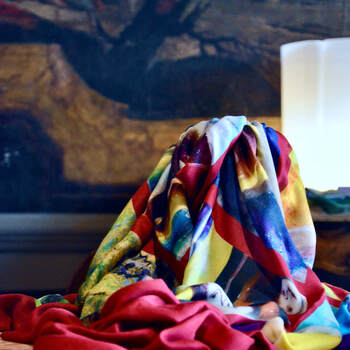
La collezione di foulards firmata Vita di Vetro - Andrea Moretti è nata nel 2017 dal desiderio di vedere realizzato un sogno di nostro padre e celebrare così il suo infinito amore per il vetro che, scaturito da una tradizione di famiglia, lo ha accompagnato per tutta la vita. Il suo bisnonno Vincenzo Moretti (1835-1901) con la sua produzione di vetro Murrino, ha realizzato innumerevoli opere d’arte ora custodite in diverse collezioni nel mondo.
Per rappresentare le possibili combinazioni di disegni e colori egli creò un Campionario composto da 102 formelle, da cui traeva i disegni per realizzare vasi, piatti e altri oggetti preziosi.
Proprio dai singoli pezzi di vetri murrini della collezione di papà, nasce l’idea di trasportare su seta pregiata, la magia, i colori e la trasparenza del vetro.
La fragilità e le preziose imperfezioni di questo materiale a noi così familiare, sono state fonte d’ispirazione anche per la nuova collezione di lampade.
Noi figlie, con la stessa gioia che lui ci ha trasmesso, siamo davvero felici di aver regalato un sogno al nostro amato papà.
Giovanna, Carlotta, Orsola Moretti
The collection of foulards signed by Andrea Moretti, originated in 2017 from a desire to realize one of our father’s dreams and celebrate his infinite love for glass. This passion is a family tradition.His forefather Vincenzo Moretti (1835-1901) with his production of Murrino glass, inspired the realization of countless artworks, preserved in numerous collections around the world.
To represent all possible combinations of designs and colors, he created a sample of 102 tiles now divided into three family collections, that could be used to make bowls, pots and other precious objects.
It's the pieces of our father’s collection that inspired the idea to carry the colors and transparency of glass on silk.
The fragility and all those precious imperfections of this material that is so familiar to us, have also inspired our new lighting collection.
We, as his daughters, with the same joy he transmitted to us, are very honoured to realise one of our beloved father's dreams.
Giovanna, Carlotta, Orsola Moretti
Per rappresentare le possibili combinazioni di disegni e colori egli creò un Campionario composto da 102 formelle, da cui traeva i disegni per realizzare vasi, piatti e altri oggetti preziosi.
Proprio dai singoli pezzi di vetri murrini della collezione di papà, nasce l’idea di trasportare su seta pregiata, la magia, i colori e la trasparenza del vetro.
La fragilità e le preziose imperfezioni di questo materiale a noi così familiare, sono state fonte d’ispirazione anche per la nuova collezione di lampade.
Noi figlie, con la stessa gioia che lui ci ha trasmesso, siamo davvero felici di aver regalato un sogno al nostro amato papà.
Giovanna, Carlotta, Orsola Moretti
The collection of foulards signed by Andrea Moretti, originated in 2017 from a desire to realize one of our father’s dreams and celebrate his infinite love for glass. This passion is a family tradition.His forefather Vincenzo Moretti (1835-1901) with his production of Murrino glass, inspired the realization of countless artworks, preserved in numerous collections around the world.
To represent all possible combinations of designs and colors, he created a sample of 102 tiles now divided into three family collections, that could be used to make bowls, pots and other precious objects.
It's the pieces of our father’s collection that inspired the idea to carry the colors and transparency of glass on silk.
The fragility and all those precious imperfections of this material that is so familiar to us, have also inspired our new lighting collection.
We, as his daughters, with the same joy he transmitted to us, are very honoured to realise one of our beloved father's dreams.
Giovanna, Carlotta, Orsola Moretti
|
|
